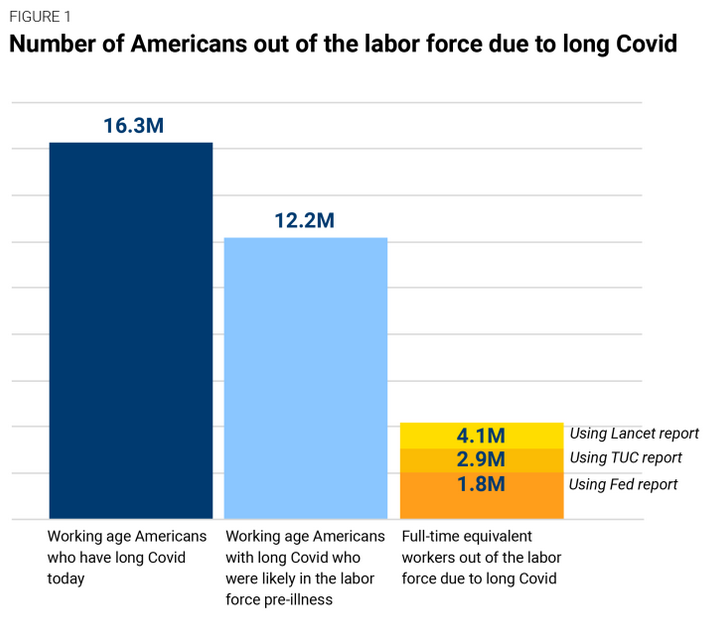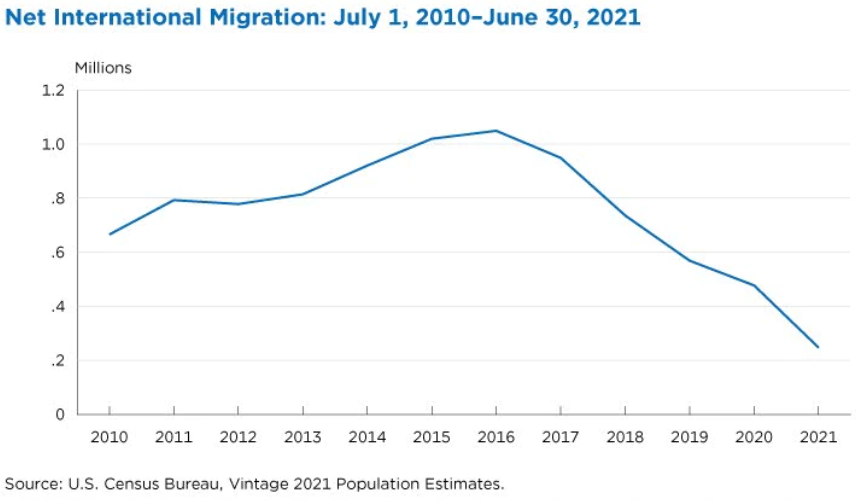The October employment report was released last Friday, and it told a familiar story: the US economy is still suffering from labor supply issues, even with the pandemic (mostly) in the rear-view mirror and the Fed trying to apply the brakes via rapid rate hikes. As I noted in a fraction blog post last week, the professional workforce of the future is actually shrinking, hit by declines in college enrollment and legal immigration. Let’s dive a little deeper into the present situation – how many workers should we expect the US workforce to have right now, where are the missing workers, and what’s to be done about it?

The BLS October 2022 data showed a labor force participation rate still 1.2% below February 2020 levels. Population growth since that time implies a labor force that should be at least 3.2M workers larger than it is today – so what happened?
Early Retirements – Departure of the Boomers: -2.4M workers
The St. Louis Federal Reserve estimated that 2.4M additional workers retired early from the start of the pandemic through Q2 2021. Subsequent analysis by the Washington Post indicates that retirees are returning to work – but only at levels found in 2019, so this doesn’t make up for the pandemic era losses.
COVID Deaths and Long COVID: -2M Workers
Per Statista, just over a quarter million working age Americans have died of COVID since the start of the pandemic, further reducing the workforce.
COVID’s larger impact is through the impacts of long COVID – the Minneapolis Fed and Brookings estimate that 1.8M FTEs worth of work have been lost due to long COVID job loss and work hours reductions.

Lack of Immigration – Trump + COVID: -1M workers
This Census chart tells the story – changes in federal immigration policy and the closing of borders during the pandemic led to a huge loss in immigration. 1.5M less immigrants, with a 65% labor force participation rate, equates to a loss of roughly 1M workers due to changes in immigration flows.

Summing It All Up: 5.4M Workers Missing
The latest JOLTs report shows 10.7M job openings – 5.4M more available workers, when added to current unemployed (6.1M) would make for more available workers than jobs. That’s the opposite of the current 2:1 ratio of jobs to workers!
Alas, we can’t wave a wand and undo the damage of the pandemic, and many early retirees are happy with their new lives. Immigration is beginning to rebound, and will make a long term difference.
Short-term, we’ve got to make do with the workers we have – and that’s why I believe that fractional work is the future. Fully utilizing the surplus capacity of the existing professional workforce in America would add 4M FTEs to the labor market, almost fully replacing the 5.4M lost. In the coming weeks I’ll delve deeper into the fractional workforce and how it can help.